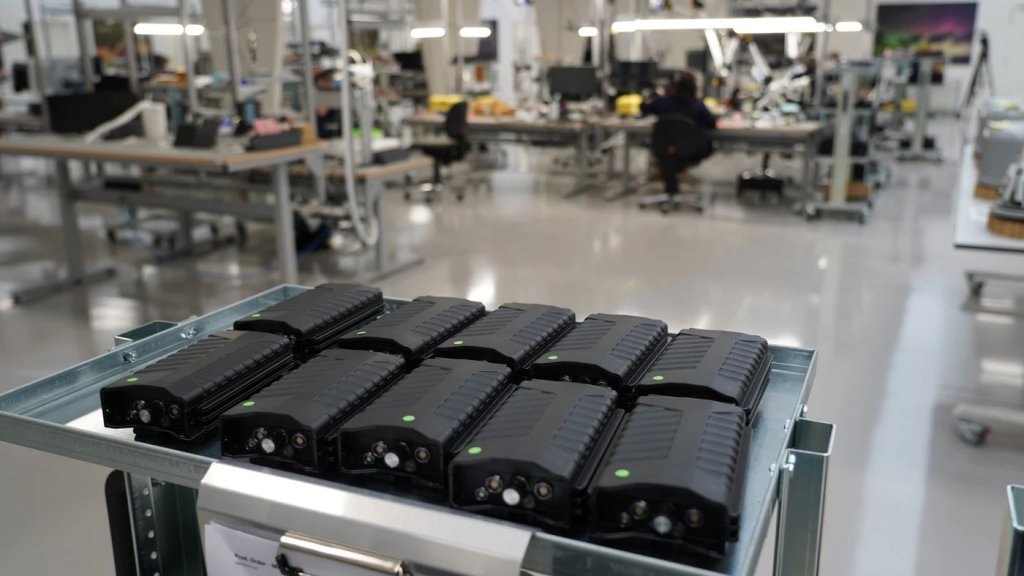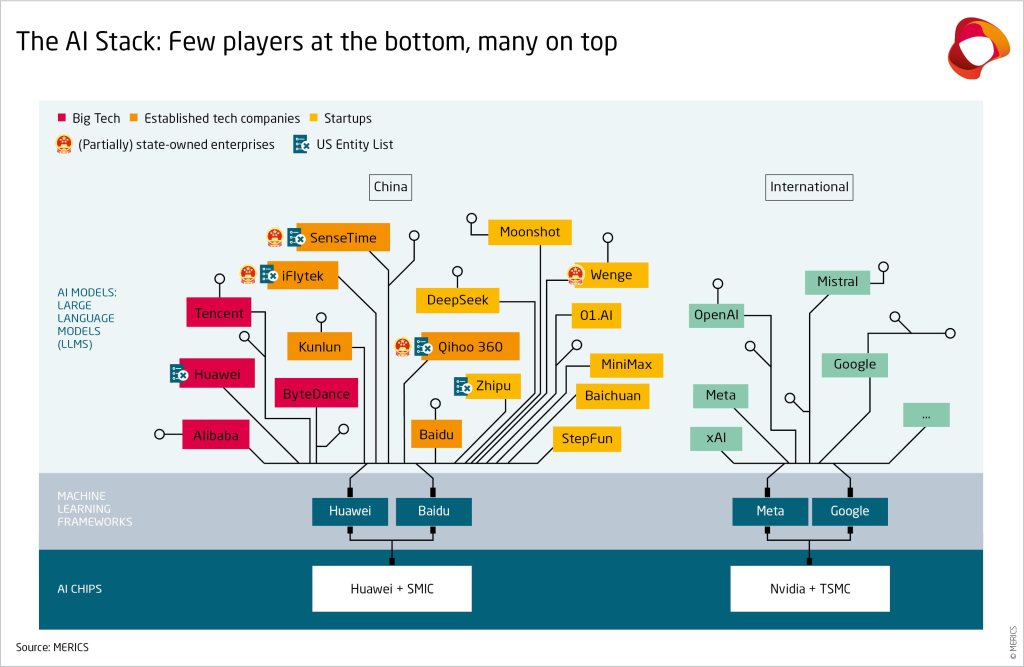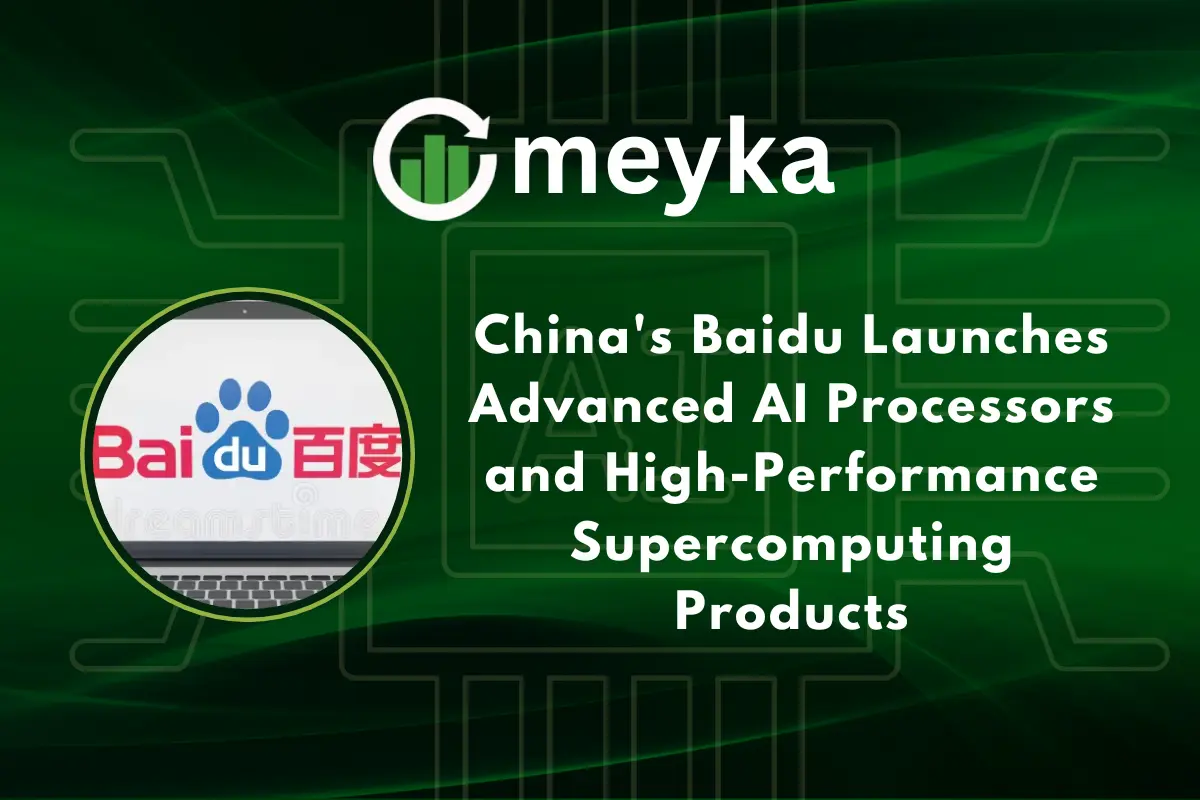China’s Baidu Launches Advanced AI Processors and High-Performance Supercomputing Products
On November 13, 2025, Baidu made waves by unveiling its latest AI hardware and supercomputing systems. The company introduced cutting-edge AI processors designed to power future models across its platforms. At the same time, Baidu revealed a high-performance supercomputing infrastructure aimed at accelerating everything from cloud services to autonomous-driving research.
This marks a bold step in Beijing’s wider push for technological self-reliance. With global chip tensions rising and export restrictions tightening, Baidu’s launch is not just about new tools; it signals China’s ambition to build world-class AI computing power at home. The move may shift how tech firms develop and deploy AI, and reshape the race for dominance in intelligent systems.
Baidu’s new AI Processor Lineup

Baidu announced two new AI chips at Baidu World on November 13, 2025. The firm named them M100 and M300. The M100 is aimed mainly at inference tasks. The M300 targets both training and inference for large models. Baidu says these chips are built for high throughput and lower energy use than earlier designs. Early reports indicate the M300 will support heavy model training workloads that previously needed foreign GPUs. The move underlines Baidu’s push to run more AI work on home-grown silicon.
Technical Features and Performance Claims
Public details stress performance per watt and dense compute racks. Baidu highlighted improved matrix-multiply performance and better memory bandwidth. The company also discussed system interconnects tuned for large model parallelism. Those elements matter for training models with billions or trillions of parameters.
Independent analysts point out that such gains reduce the total cost of ownership for cloud and enterprise customers. Reuters previously reported that Baidu has experience scaling Kunlun chips into large clusters, showing real-world capability to support heavy model training.
High-Performance Supercomputing Systems
Alongside chips, Baidu revealed new supernode and supercomputing products. These systems combine many M-series chips, Kunlun units, and optimized networking. They are designed for AI labs, cloud tenants, and large enterprises. Baidu emphasized modular design for easier deployment in data centers. The company also noted advances in cooling and power efficiency at the rack scale. Reports say these systems will support Baidu’s expanded Ernie model family and third-party AI workloads.
Strategic Importance for China’s AI Ecosystem
This launch matters for China’s industrial strategy. Beijing aims to lower reliance on foreign semiconductors. New domestic chips and supercomputers help meet that goal. With tighter U.S. export rules on advanced GPUs, local alternatives gain urgency. Baidu’s announcements show technology companies moving from software to owning key hardware layers. That trend could reshape national AI infrastructure and supply chains.
Market and Competitive Effects
Baidu’s hardware push tightens competition with Alibaba, Huawei, and other Chinese cloud players. Each rival is investing in chips, chips-to-cloud platforms, or both. Analysts expect more customer trials in the next 6-12 months. The market reaction to Hong Kong trading showed investor interest on the day of the reveal.

If Baidu can deliver performance and price benefits, market share in China’s AI compute market could shift away from foreign incumbents. An AI stock research analysis tool noted that hardware revenue could become a growing segment of Baidu’s business if adoption scales.
Applications and Real-world Use Cases
The new chips and systems will be applied first to Baidu’s core services. That includes search, the Ernie model series, cloud AI, and autonomous driving research. Faster training shortens model iteration cycles. Lower inference cost makes wider deployment feasible for voice, image, and video services.
Third-party enterprises will use the platforms for drug discovery, financial analytics, and smart city projects. These applications depend on both raw compute and the software stack that schedules large jobs and moves datasets efficiently.
Deployment Roadmap and Timelines
Baidu said the M100 targets earlier availability, while the M300 is aimed at full production in the months ahead. Some outlets report staggered releases into 2026 and 2027 for different SKUs and system configurations. Meanwhile, Baidu already runs large Kunlun clusters for internal AI work, which helps shorten customer onboarding times. The phased rollout reduces risk but will test Baidu’s manufacturing and supply partnerships.
Risks and Challenges
Several obstacles remain. Mass production of advanced chips is hard. Fabrication capacity and yield are limiting factors. Export controls and geopolitical friction could hamper access to certain tools for chipmaking. Software maturity is also a challenge; developers must adapt distributed training frameworks to new hardware. Finally, competition from local chip startups and global GPU makers will be intense. Meeting enterprise reliability and support expectations will be critical for adoption.
Longer-term Outlook
If Baidu succeeds at scale, the long-term effects are material. China could host more domestic AI training and inference workloads. Local cloud providers might offer lower-cost AI compute, which would broaden AI adoption across industries. For global tech, this means a deeper, more diverse supplier landscape. Adoption will depend on real benchmarked performance, price, and the software ecosystem that runs on these chips. Close monitoring of deployments and independent tests will be important in the next 12 months.
Wrap Up
Baidu’s November 13, 2025, launch signals a clear shift. The company moved toward tighter control of the hardware stack. The new M100/M300 chips and associated supercomputing systems aim to lower costs and boost capacity for large AI models. The road ahead will test manufacturing, software tuning, and customer adoption. If Baidu clears those hurdles, China’s AI compute map could change substantially in the coming years.
Frequently Asked Questions (FAQs)
Baidu launched M100 and M300 chips on November 13, 2025. They help train and run large AI models faster while using less power and improving system efficiency.
Baidu’s supercomputers speed up AI research and data processing. They help China build stronger local computing power, reducing reliance on foreign chips and supporting national AI growth.
Yes. Baidu’s new M100 and M300 chips aim to challenge Nvidia’s AI dominance. They focus on high performance, energy efficiency, and powering advanced Chinese AI models.
Disclaimer: The content shared by Meyka AI PTY LTD is solely for research and informational purposes. Meyka is not a financial advisory service, and the information provided should not be considered investment or trading advice.






